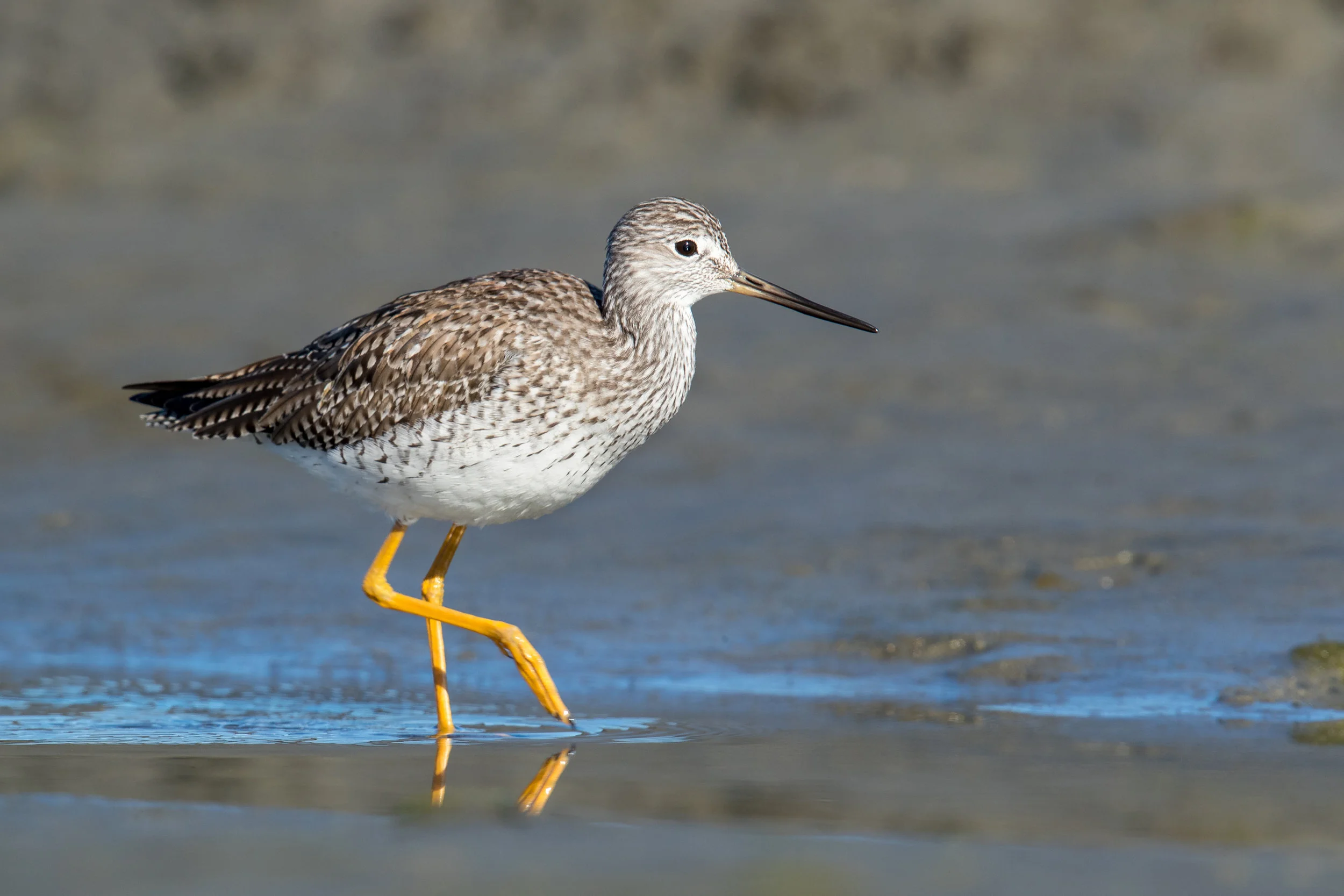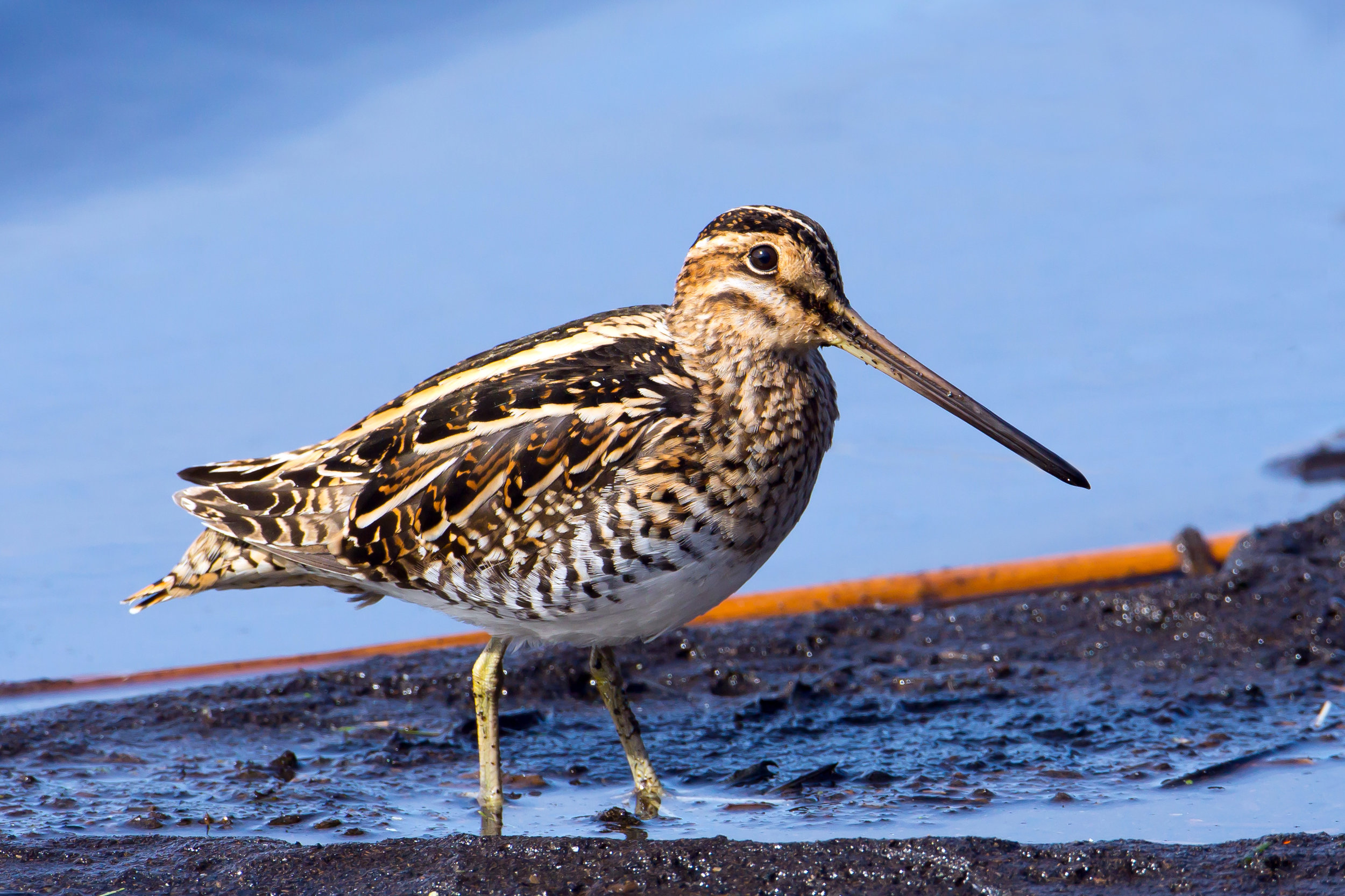Once the June solstice is passed fall begins for shorebirds. In the breeding areas of the northern tundra these long-distance migrants begin to feel the urge to migrate south. By the end of July and the first two weeks of August adult shorebirds are flying south and can be expected to stop along Washington waterways to rest and refuel.
Rock Sandpiper
Dunlin
Dunlins are hardy birds that winter farther north than any other shorebird. This fall and winter they will be along the Washington coast from late October to early May. Major stopover points for them are the tidal flats and coastal estuaries around Willapa Bay and Grays Harbor and the Samish and Skagit Flats where they forage on marine and freshwater invertebrates by probing a few centimeters into the mud or fine-grained sand.
Greater/Lesser Yellowlegs
Baird's Sandpiper
Baird’s Sandpiper is not seen very often in Washington and because of this it poses an identification challenge for many birders. However, its slightly larger size when compared to other peeps; its lack of red or rufous coloration; and its penchant for foraging higher on beaches and in drier areas, all help to separate this peep from the others.
Spotted Sandpiper
Marbled Godwit
The Marbled Godwit (MAGO) is about 18" long with a 29" wingspan and weighs 13 oz. (370g). The genus name Limosa (lie-MOH-sah) is from the Latin limus, meaning "muddy," for its favorite habitat, mudflats. The species name fedoa (FED-oh-ah) is the Latin version of an old and now unknown English word meaning "marbled." - for its mottled plumage.
Western Sandpiper
The Western Sandpiper is part of the genus Calidris from the Greek kalidris which was used by Aristotle for a speckled waterbird. Mauri is from Ernest Mauri (1791-1836) an Italian botanist and a friend of Charles Bonaparte (1803-1857), who named this bird for him. They co-authored a book on Italian fauna. The bird is the western counterpart to the Semipalmated Sandpiper Calidris pusilla and the common name designates this location.
American Golden Plover and Pacific Golden Plover
Willet
Long-billed/short-billed Dowitcher
Black-necked Stilt
Sanderling
Black-bellied Plover
Surfbird
Wilson's Snipe
Red Knot
n spring the Red Knot stands out on tidal flats in its bright chestnut plumage on its face, chest and belly. It has black legs and a black bill that is about as long as the head is wide (Paulson). By late July it will have molted to gray with a white belly and it easily blends in with other shorebirds and the colors of sand and vegetation along shorelines.






















